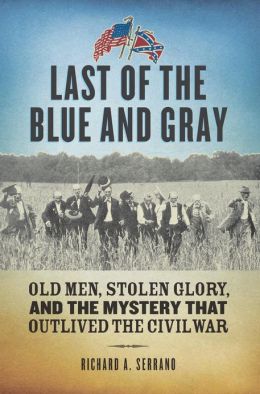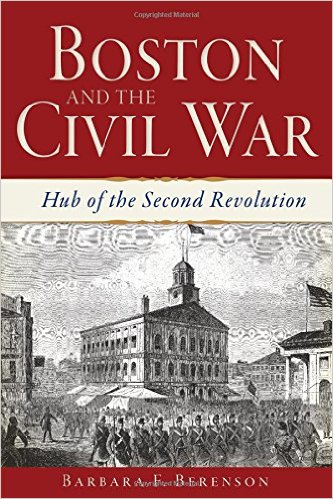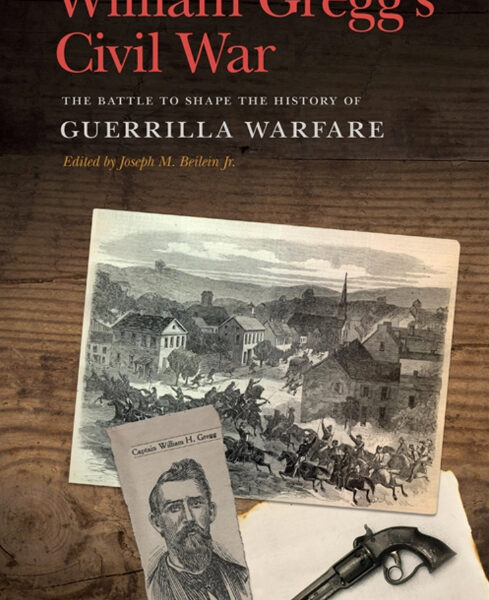Last of the Blue and Gray: Old Men, Stolen Glory, and the Mystery that Outlived the Civil War by Richard A. Serrano. Smithsonian Books, 2013. Paper, ISBN: 1588343952. $27.95.
 As America stood on the cusp of the Civil War centennial, focus turned toward the few remaining figures of the country’s greatest conflict: the last surviving veterans of the Union and Confederate armies. While a considerable number of Civil War soldiers had lived well into the twentieth century, by the mid-1950s, only a handful lingered on, closely monitored by attentive doctors and concerned families. Soon the very last Union soldier was proclaimed and then, too, was the last Confederate. These two men, Federal Albert Woolson and Confederate Walter Williams, served as “artifacts of a shuttered era, curiosities of an ancient time, septia-toned figures still inhabiting a modern world from their rocking chairs and oxygen tents” (4). Yet as Richard Serrano carefully reveals, one did not deserve national recognition at all; he had not only stolen the rightful title of “the last living link with the Civil War” from a true veteran, but he had also routinely received pension money from his too-trusting government (155). The haunting question of which man was actually a genuine soldier draws readers through the book. However, the line between reality and fantasy blurred around more than just these two potential imposters; it also grew unclear for other supposed veterans and even for the nation as a whole. After enduring multiple world wars and now engaging in the Cold War, Americans desperately wanted to believe in heroes from times past. In an appealing and masterful narrative, Serrano chronicles how America was swept away by visions of blue and gray.
As America stood on the cusp of the Civil War centennial, focus turned toward the few remaining figures of the country’s greatest conflict: the last surviving veterans of the Union and Confederate armies. While a considerable number of Civil War soldiers had lived well into the twentieth century, by the mid-1950s, only a handful lingered on, closely monitored by attentive doctors and concerned families. Soon the very last Union soldier was proclaimed and then, too, was the last Confederate. These two men, Federal Albert Woolson and Confederate Walter Williams, served as “artifacts of a shuttered era, curiosities of an ancient time, septia-toned figures still inhabiting a modern world from their rocking chairs and oxygen tents” (4). Yet as Richard Serrano carefully reveals, one did not deserve national recognition at all; he had not only stolen the rightful title of “the last living link with the Civil War” from a true veteran, but he had also routinely received pension money from his too-trusting government (155). The haunting question of which man was actually a genuine soldier draws readers through the book. However, the line between reality and fantasy blurred around more than just these two potential imposters; it also grew unclear for other supposed veterans and even for the nation as a whole. After enduring multiple world wars and now engaging in the Cold War, Americans desperately wanted to believe in heroes from times past. In an appealing and masterful narrative, Serrano chronicles how America was swept away by visions of blue and gray.
Although time settled some disputes and allowed for reconciliation between once bitter enemies, other debates remained. In particular, many struggled with the topic of the Confederate flag. The fiftieth anniversary of the Civil War showed that a few old battle wounds were still sore: Confederate veterans wanted to display the stars and bars, but Union veterans refused to allow anything but the stars and stripes. This conflict repeatedly arose as a heated point of contention between war survivors and even between Americans barely born in the nineteenth century. At Manassas in 1911, northerners declared they wanted to “dig a grave, broad and deep, in the soil of the battlefield and publicly bury the Confederate flag,” but the two sides did manage to meet and behave (13). Still, the problem remained unsolved, evidenced at Gettysburg in 1938, when a former Rebel told newspapers that his wife kept him home because he might “get in another fight with them d—Yankees” because they refused to fly the Confederate flag (22). Serrano captures the ongoing debates between Civil War survivors in sometimes surprising ways: a reader may briefly lose track of the decades, only to be reminded by the Great War in Europe or downtown GAR parades full of cars and not horses. After all, these men still spoke like soldiers “full of youth and impatience,” but, as their bodies showed their real age, they “dwindle[d] into men of inaction, no longer able to climb stairs” (59).
Serrano shows how these past events inspired modern Americans to revere their larger-than-life war heroes. The veterans who had survived for the fiftieth and seventy-fifth anniversaries certainly captivated Americans with their love of tobacco, liquor, and women. And Serrano revels in these men’s grand stories, their elaborate military dress, their tendency to smoke a dozen cigars a day, their love of good liquor early in the morning, and their desire to kiss and pinch much younger ladies wherever they might go. America too could barely get enough of their antics and tales. On their birthdays, the last Civil War veterans received countless greetings and gifts; when Woolson turned 106, “an avalanche of eight thousand cards and letters arrived” at his door (81). Schoolchildren raised funds to commission paintings of them for public display, and sculptors created statues in their likeness for placement at Gettysburg. Innumerable journalists, military organizations, and even the White House observed the last Civil War soldiers in their dying days and looked forward to the conflict’s anniversary as “A Centennial for All Americans.”
But as these veterans reached their 100s, their bodies began to fail them, and so did their memories, which grew ever more confused. On one day, a man would say he was wounded at Gettysburg, and on another, he would admit he never saw combat and had always stayed near the family farm. Occasionally, after a celebrated veteran died, records would reveal him to have been nothing but a fraud—often not even having been born in time for Civil War service. Nonetheless, America loved the few survivors of that terrible struggle and ignored warning signs and clear evidence against veterans’ credibility. With the desire to remember their glorious past and celebrate their remaining heroes, Americans ended up avoiding that which made the war uncomfortable. Serrano himself avoids a few discomforting issues like the rise of the Civil Rights Movement just as the last Civil War veterans lay dying. He only briefly discusses the surprising number of war widows who married much older veterans, which meant that the final widows died in the early 2000s when the last veterans had died in the 1950s. Had Serrano included real analysis of these age-disparate marriages, he could have delved into what, including fame or fortune, drew women to these old soldiers.
Serrano does successfully underscore the unfortunate truth that many of America’s last Civil War veterans, who were widely celebrated and even nationally honored, had not served at all. Instead they were men who needed money in dark times, wanted recognition in their final years, or had become confused in their old age concerning what they had done nearly a hundred years before. In their great desire to see these men as “ancient warriors march[ing] down confetti-filled city streets,” many Americans ignored the evidence suggesting fraud or senility, because, as Serrano insists, “America has always loved a myth and adored a hero” (190-191). Last of the Blue and Gray provides readers with the fascinating story of the last Civil War veterans’ final days and a much-needed dose of skepticism regarding Americans’ blinding love of times before.
Leah Richer is a Ph.D. Candidate in History at the University of Georgia.




